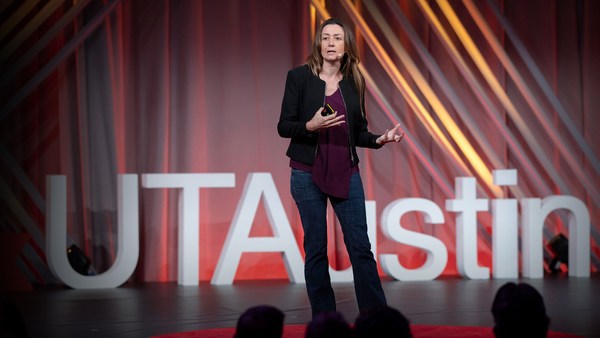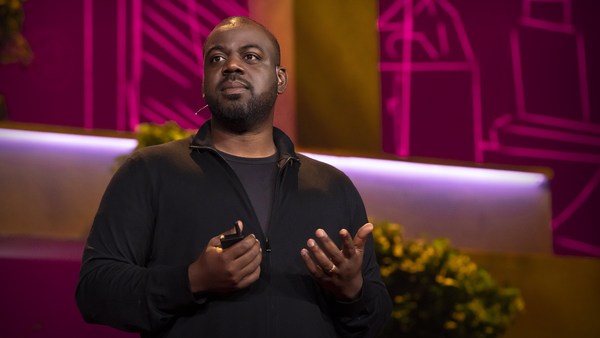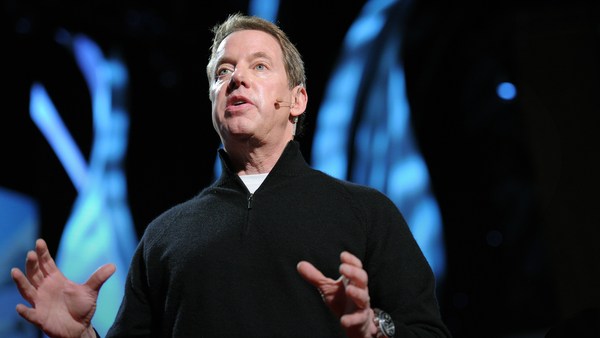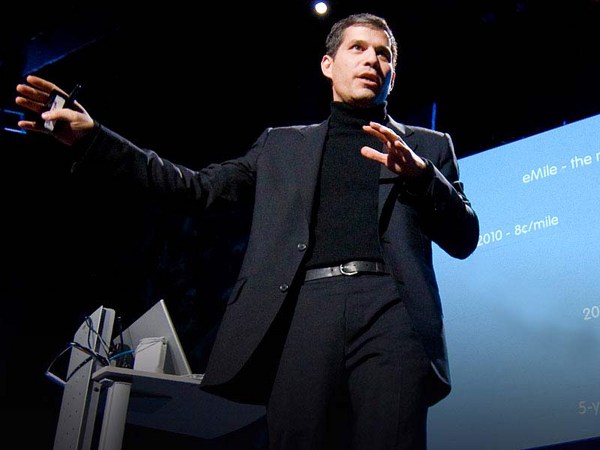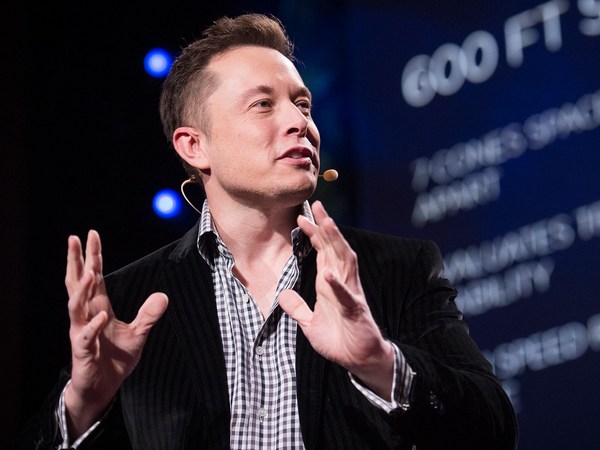When I listen to all of this, my question is, are we too late? I’m half German, and I hate being late, to be very honest. So it's something which gets me sort of all wound up, but the reality is ... we’re running out of time. We have real issues reaching the 1.5 degrees of Paris, so that's one issue. But we're not only running out of time, we are also running out of resources. So three weeks from now, on the second of August, we will reach the World Overshoot Day, meaning we will have used up all of the replenishable resources of this planet. So that's not good. These are real problems.
Now, I'm an engineer, and we engineers love to solve problems. That's what we do. But the reality is, if we go to the real world, we will not be able to solve those problems doing everything in the real world as we've done it before.
A lot of us, including my kids and myself, and a third of the world population, escape into digital worlds. There are three billion gamers out there. We "lose" time. But what if I would tell you ... that we could use the digital world to cheat time in the real world, and to make things better and faster with less resources? You would tell me, "Well, how does it work, Cedrik?" And I would tell you the following.
Now, in the physical world, the laws of physics apply, right? I'm in industry, so what do we do? We dig up the Earth, we get stuff out, we ship it around the world, we melt it, we assemble it, we try if it works, and we try again, and if not, we dig up more stuff. We basically are having a trial and error sort of approach. Lots of time, lots of resources are being used. It took us more than a hundred years to build the combustion engine car.
Now in the digital world, it's a bit different. We could have a digital playground, we can learn things without being bound by the laws of physics. We can replicate the complete real world and start experimenting on it. And the one thing we can [do], is we will not learn one time faster, not ten times faster. We will learn a million times faster, even more. We're only limited by how much compute power we throw at a problem.
So the thing we have, how do we make it real? So how do we cheat time to do more with less? We are using all too much fossil fuels. We're not using enough renewables, and we all know that batteries are the answer, to be able to help us sort of store and distribute this renewable energy. Now the problem with batteries is that there's a lot of investment going into battery manufacturing at the moment. Since 2019, 300 billion dollars are being put into batteries, 200 gigafactories are being built, because we need to build 10 billion batteries per year in 2030.
And just to give you an overview of a gigafactory, basically, you take two Eiffel Towers, put them next to each other, that's the size of the gigafactory which is out there. Eiffel Tower -- I’m half French, so when I want to say something is really big, I take a couple of Eiffel Towers, so two Eiffel Towers next to each other. Now imagine 200 of those gigafactories which are being built. They need to build the right batteries, they need to do this in the right way, and they need to recycle them.
How can we apply this technology? Very simple. First thing we will do in this, let's call it an industrial metaverse, we will build the perfect battery. We will experiment with its chemistry, with how it needs to be built, and we will solve the problems we have. One problem is, I don't know if any of you came here in an EV, you probably didn't like your charging time. So I brought a little example for you. So let me share this example.
So this is basically a module, which goes into a pack. It's actually a car battery. If we're capable of cooling this car battery 30 percent faster ... or better, you can charge your cars twice as fast. So we could actually save time with less resources. And all of this simulation can be done not in years, it can be done in weeks, without building a single battery. So that's the first thing.
The second thing is, actually building batteries the traditional way uses a lot of energy, lots of water, lots of resources, and produces lots of scrap. That’s not good. If you go to a traditional -- I mean, making batteries is like making a cake. I'm sorry for all of the battery experts in the room, but it's baking a cake. What you do is you take a lot of ingredients, you mix them up. In the factory, you have somebody listening to the sound -- "Yep, it's about right." If it's true, you put it onto aluminum foil, which gets folded, which gets put in a casing, dried out. The problem is that if the person listened to it the wrong way, you can throw away five days, seven days of battery production, and this, in a gigafactory, is a really bad thing.
So what do we do? That's my second example. We build these gigafactories completely in the metaverse, in the digital world, first. And we simulate how we do actually the chemistry, how does it flow, can we get the information? We don't need to listen to it. How do we optimize the different steps? This is a gigafactory, for example, which is going to be built. So we build this gigafactory in the metaverse first, to make sure that it produces in the right way. And once we have the real factory, the metaverse factory runs in parallel and learns faster than the real world to learn from it.
So we dream up a better battery, we make a better battery, and then the last one, we have to recycle the battery. We have to reuse it. So I'm hoping that all of you are collecting your batteries to bring them back, in Germany to the supermarket, for recycling. The reality is, if you have a bag of 20 batteries, if it’s lithium-ion, only one will be recycled, 19 will be thrown away. Only five percent of all batteries are actually being recycled at the moment.
And what we can do if we have a digital twin on ... designing the battery, building the battery, is we can have a digital twin of each battery, saying, "That's me, this is how I've been built, these are my components, this is how you can repair me, this is how I can be sort of disassembled," and you can automate it. So we can actually take 95 percent or plus of the battery back into the process.
Now this battery example is just to give you a view on how we can design, build and reuse it in a better way. The problem is, I gave that speech to my kids, and my kids basically said, "Look, Dad, we're computer scientists, this has been done for the last 40 years. What's new about it?" So I'm like, "What's new is that we are now throwing a huge amount of cloud computing and AI to it, so every industry can use this capability." And I'll give you three examples.
First one, air travel. Three to four percent of worldwide CO2. We're working with small start-ups which are building completely electrical planes, completely in the metaverse first, to build them right.
Second one, so we build better travel, we can use it for better food, right? Twenty-five percent of all CO2 is being used in agriculture. So this is an example I brought for you. We can build gigafactories for food. This is vertical farms, completely automated. These farms use 100 percent renewables, they use 95 percent less water, zero pesticides. And it tastes, actually, quite good. And it's completely automated. What does that have to do with a digital twin? We have a twin of each plant, which means we can make every day a perfect day for these plants. It's pretty good.
Now the last example, it's going to be shocking to you, but you should think about it. You're spending 90 percent of your living time in buildings. In buildings which have been badly designed, badly built and badly run. You heat it when it shouldn't be heated, you cool it when it shouldn't be cooled, you leave the lights on, so it's a huge waste of resources. Thirty percent of all energy goes into buildings. So we can use those tools to design houses better, to simulate what needs to be done to build them in a better way, so they don't have to be changed multiple times, and to run them. But being here in Detroit, we can also do it for complete parts of the city, which is my last example.
I come from Berlin. This is an old industrial part of this town, which we are going to rebuild completely. And what we decided is we're going to rebuild it first in the metaverse. Because we want to optimize where the excess heat goes, where the excess cooling is going, what happens if the rain falls, how can we keep it? What does the biosphere look like, what is the biodiversity, can we make it wheelchair-accessible? We optimize it. So once we've built this part of Berlin ... It's going to be really sort of optimized, and we will not have made mistakes. We're getting platinum LEED certification before this thing is even being built.
So why am I sharing this? I told you as a German, I hate being late, right? But the reality, a lot of the industries you're working in are late, are late to do their contribution, to make sure that we are reaching the Paris Accords. So there's tools which enable us to cheat time and to do more with less -- we should use those tools. So my ask of all of you is, let's use those tools to make it a better world and have an impact.
Thank you.
(Applause)
